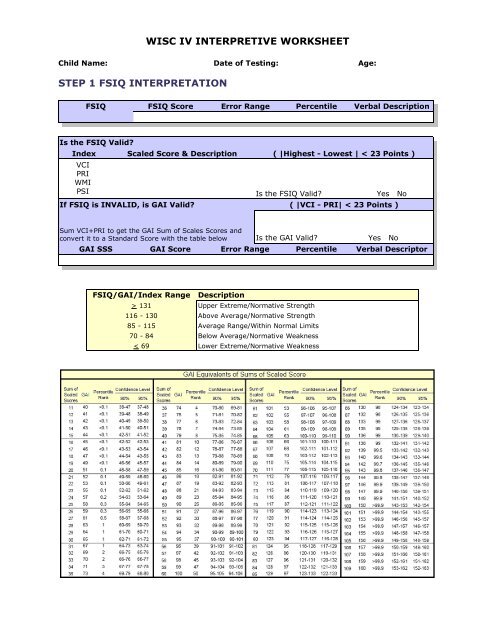
PSI 20 points: 28.0% IQ average range: PRI vs. Index score discrepancies are directly related to IQ: higher IQ associated with higher frequency of large discrepancies between index pairs. IQs average range, 20 pts or more VCI vs. Published findings parallel those of WAIS-III Lower reliability of PSI compared with the other 3 indexes probably explains why frequencies of large discrepancies between pairs of index scores including PSI are higher than frequencies of pairs not including PSI. More data will become available Processing Speed is the least reliable index score. WAIS/WMS-III normative (n=1250) 16 or more years education, 21% had Verbal IQ – General Memory (delayed memory) discrepancies > 15 points 15 points (Dori & Chelune 2004) WAIS-IV Large discrepancies, favoring intellect, are common, esp. 85 standardization sample participants with a high subtest score of 9: mean lowest subtest score was 3.9 (diff ~ 5), 91% had a low score of 5 or below, and 13% had a low score of 2 or below Schinka, Vanderploeg, and Curtiss (1994) Verbal Intellect vs. WAIS-R normative sample, 287 with a high subtest score of 14: mean lowest subtest score was 7.0 (mean diff = 7), 41% had a lowest subtest score of 6 or below, 20% had a low score of 5 or below. Normal Variability is Directly Related to IQ (WAIS-R) PIQ absolute difference > 11 Variability between highest and lowest subtest scores: mean 6.7, SD 2.2. Overdiagnosis of permanent brain injury Many causes of abnormality: normal variability, developmental LD, and poor motivation are common. Poor scores are not pathognomonic of brain injury in people with history of questionable causation, e.g. Abnormality is not the same as pathology or impairment. Definition of AbnormalĪbnormal is a statistical term, referring to some arbitrary degree of deviation such as > 1 S.D.

Both error types, false negatives and false positives, are harmful.Īdults Emphasis on published data Problems with sensitivity (false positives) of NP assessment is not a focus. Focus on false positive dx from normal variability. Neuropsychological diagnostic methods may err in the direction of lack of specificity (excessive false positive dx) or lack of sensitivity (false negatives). To Err is Human Clinical and Forensic Implications of Normal Variability in Adults Archives of Clinical Neuropsychology, 2009


 0 kommentar(er)
0 kommentar(er)
